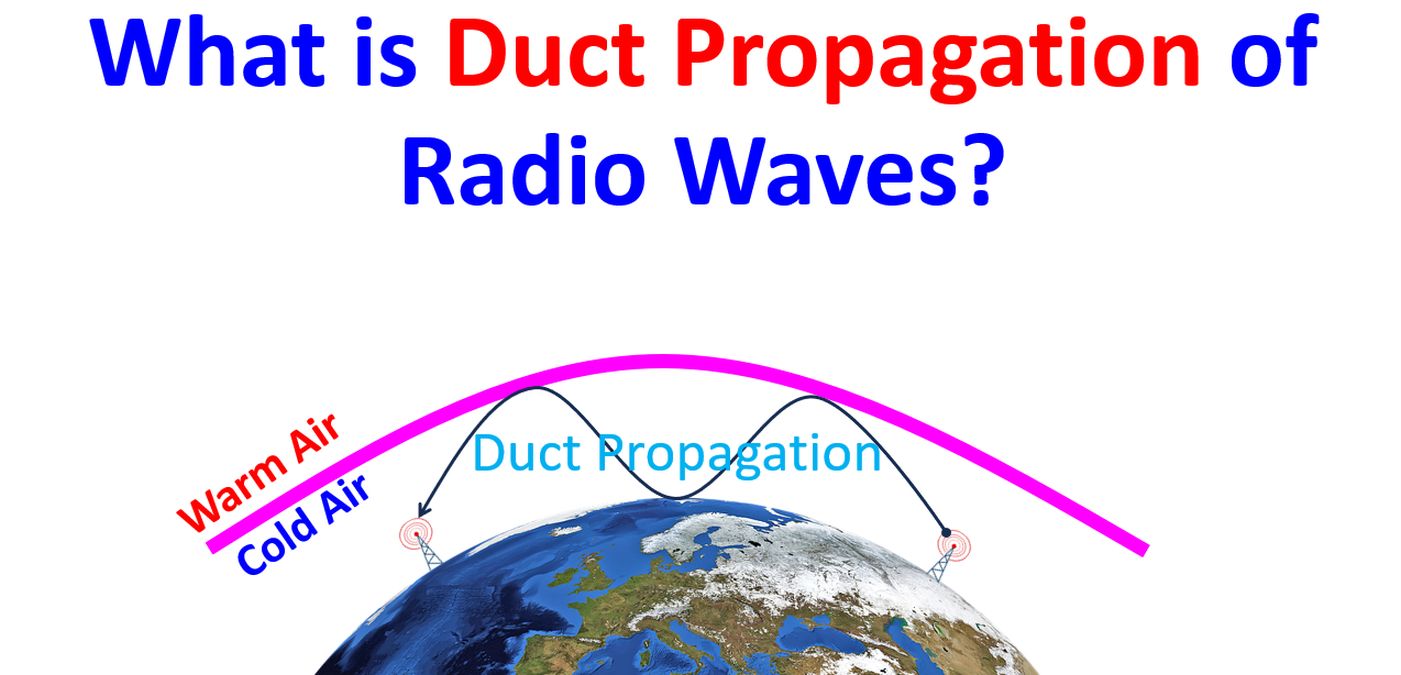What is Duct Propagation of Radio Waves?
What is Duct Propagation of Radio Waves?
Duct propagation is a special type of propagation around the curvature of the earth even as much as 1000 km, at VHF and UHF frequencies. This occurs when there is a temperature inversion in the troposphere. In temperature inversion, in that region, temperature increases with heigth instead of decreasing. This leads to refraction of higher frequencies down to earth instead of going up into the ionosphere. Reflection from the ground back to the troposphere initiates similar processes again.

This has been called duct propagation or super refraction. Duct propagation allows the signals to pass beyond the horizon, unlike the usual line of sight propagation of VHF and UHF frequencies. The atmospheric duct in case of duct propagation acts like a natural waveguide in the atmosphere, which guides radio waves along the curvature of the earth. The atmospheric duct is a region of cool air between two layers of warm air above and below, between the troposphere and the stratosphere. As cold air and warm air have different densities and hence refractive indices, the radio waves received at a low angle get refracted downwards instead of penetrating up into the ionosphere and above. Cool air has a higher refractive index.
The signals are thus trapped in the atmospheric duct and propagate along the curvature of the earth, beyond the usual line of sight between the transmitting and receiving antennas. Though this is a benefit for increasing communication distance, radar systems can sometimes be adversely affected by the presence of atmospheric ducts. Yet it could be useful for over-the-horizon radar systems.